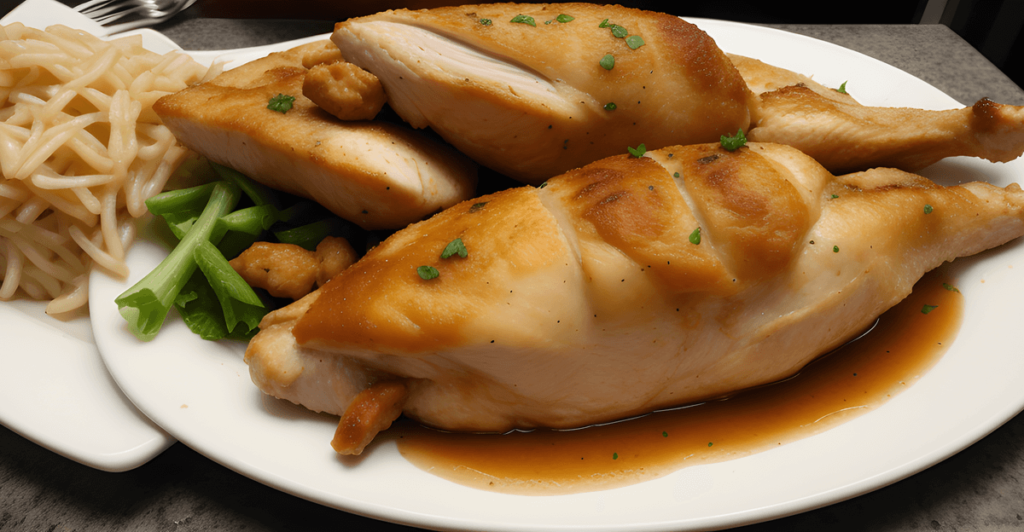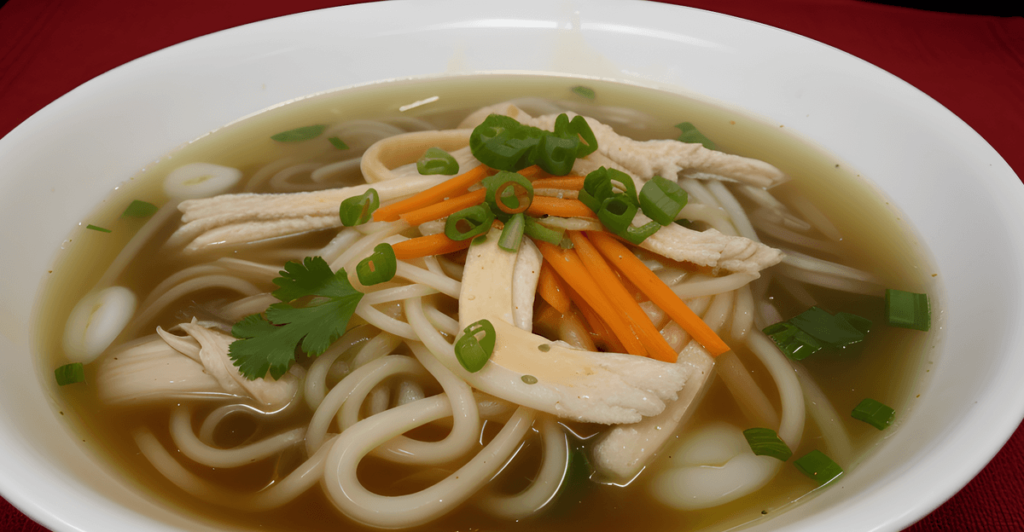Key Takeaways
- Birds, such as goose, can be consumed as a source of food, providing essential nutrients and unique flavor.
- Edible birds, such as goose, offer a rich source of protein, vitamins, and minerals, contributing to a balanced diet.
- When choosing birds for consumption, consider factors such as species, safety, and survival.
- Game Birds for Culinary Use: Game birds present an opportunity for sport and food hunting, adding diversity to culinary experiences.
- Farm-raised Birds: Farm-raised edible birds offer a reliable and controlled source of poultry for consumption.
- Adhering to safety precautions and proper preparation methods is crucial when consuming birds for food.
Introduction
Ever wondered about the possibility of dining on birds? It’s not as straightforward as it seems. While some cultures consider various bird species a delicacy, for others, it’s strictly off the menu. Join me as we delve into this intriguing topic and explore the contrasting views on consuming our certain birds.
From pigeons in Europe to sparrows in China, birds have been part of human diets for centuries. However, with growing concerns about wildlife conservation and avian diseases, attitudes towards eating birds have evolved drastically. We’ll unravel the cultural significance of bird consumption, including certain birds, and examine the ethical and health considerations associated with it.
Can You Eat Birds? Understanding the Consumption of Birds
Cultural Traditions
Different cultures have varying traditions. For example, in some Asian countries, bird’s nest soup is considered a delicacy and is believed to have various health benefits. In contrast, many Western cultures commonly consume poultry such as chicken and turkey as part of their regular diet.
In my personal experience, I’ve learned that certain cultures have specific rituals or customs associated with consuming birds. For instance, in some regions of Asia, eating duck during certain festivals or celebrations is considered auspicious and symbolizes good luck.
Individuals from different cultural backgrounds may have varying opinions about the taste of different bird species. While some people enjoy the flavor of game birds like quail or pheasant for their unique taste and texture, others may prefer the familiar taste of domesticated poultry like chicken or turkey.
Edible Birds Overview
Common Edible Birds
Poultry such as chicken, turkey, duck, and quail are considered safe and suitable for human consumption. These birds are widely consumed worldwide due to their availability, flavor, and nutritional value. They are versatile ingredients that can be used in various dishes, from soups and stews to grilling and roasting.
It’s essential to consider factors such as the bird’s diet, habitat, and potential exposure to harmful substances. For example, wild birds may not be safe for consumption due to the possibility of exposure to toxins or diseases. On the other hand, domesticated poultry is raised specifically for human consumption under controlled conditions.
Safety Considerations
Consuming edible birds offers several benefits such as a good source of protein, essential vitamins (like B vitamins), minerals (such as iron), and low levels of fat if prepared without excessive use of oil or butter. These birds offer a variety of flavors depending on how they’re cooked – from succulent roasted chicken to tender grilled quail.
However, when considering safety aspects related to consuming edible birds like chicken or turkey – proper cooking methods play a crucial role in eliminating any harmful bacteria that might be present in raw meat. It’s important to always ensure thorough cooking at appropriate temperatures before consuming poultry products.
Personal Insights
In my experience with preparing meals using edible bird meats like chicken or duck breast fillets, I’ve found that they provide a great base for experimenting with different flavors by marinating them before cooking. The versatility allows me to create various dishes ranging from spicy stir-fries using chicken breast strips or aromatic roast duck seasoned with herbs.
Overall though there is an array of delicious recipes available featuring these commonly consumed edible bird meats which makes them popular choices among home cooks looking for flavorful yet nutritious meal options.
Nutrients and Health Benefits of Edible Birds
Rich Source
Edible birds are rich in high-quality protein, making them an excellent addition to a balanced diet. Protein is essential for the body’s growth, repair, and maintenance. It helps build muscles, bones, skin, and blood.
Consuming edible birds provides essential nutrients such as iron, zinc, and B vitamins. Iron is crucial for carrying oxygen in the blood; zinc supports immune function and wound healing; B vitamins help convert food into energy.
I remember learning about how our bodies need these nutrients from different foods to stay healthy. For example, iron from edible birds can prevent anemia by helping the body produce red blood cells.

Balanced Diet
Including edible birds in your diet can contribute to overall health by providing a variety of essential nutrients necessary for bodily functions. These birds offer a nutrient-dense option that supports overall well-being when consumed as part of a balanced diet.
Incorporating diverse sources of protein like edible birds ensures that you’re meeting your body’s needs for tissue repair and muscle development. This variety also helps maintain steady energy levels throughout the day.
When I was younger, my mom used to emphasize the importance of eating different types of foods to make sure we were getting all the nutrients our bodies needed to grow strong and healthy.
Suitable Birds for Human Consumption
Factors Affecting Suitability
When considering birds as a food source, several factors come into play to determine their suitability for human consumption. The size of the bird is an important factor, as larger birds often provide more meat and are therefore more suitable for consumption. The fat content of the bird plays a crucial role in its suitability as a food source. Birds with higher fat content tend to be juicier and more flavorful, making them desirable choices for consumption. Furthermore, the flavor profile of different bird species varies, influencing their appeal as a food source.
Understanding these factors can help individuals make informed decisions when selecting birds for consumption. For example, ducks are known for their rich flavor due to their higher fat content compared to other poultry options such as chicken or turkey. This makes them an attractive choice for those seeking a more flavorful dining experience. On the other hand, quails are smaller in size but offer tender and lean meat with a delicate flavor profile, appealing to individuals looking for lighter meal options.
Popular Bird Species
Several bird species stand out as popular choices for human consumption due to their taste and texture characteristics. Chicken is one of the most widely consumed birds globally due to its versatility in various cuisines and cooking methods. Its relatively neutral flavor makes it adaptable to different seasoning and preparation styles while providing ample protein content.
Turkey is another popular choice known for its lean meat and distinct taste that complements traditional holiday meals like Thanksgiving dinners. Its large size also makes it suitable for feeding larger groups of people during festive occasions.
Ducks are favored by many culinary enthusiasts because of their succulent meat with richer flavors derived from higher fat content compared to other poultry options.
Quails have gained popularity among health-conscious consumers looking for leaner alternatives without compromising on taste or texture.
In addition to these commonly consumed birds, game birds such as pheasants and partridges offer unique flavors sought after by adventurous eaters exploring diverse culinary experiences.

Introduction to Game Birds
Game Birds: A Culinary Delight
Game birds are wild birds that people hunt for sport or food. They offer unique flavors and leaner meat compared to farm-raised birds. Common examples of game birds include pheasant, quail, and grouse.
Game birds are often sought after for their distinct taste and texture. Their natural diet, which includes a variety of seeds, berries, and insects, contributes to the rich flavor of their meat. Because these birds lead active lives in the wild, they tend to have leaner muscles than farm-raised poultry such as chickens or turkeys.
These qualities make game birds highly desirable for culinary purposes. Chefs often use them in gourmet dishes to add depth and complexity to the overall flavor profile. For example, pheasant is known for its robust taste that pairs well with earthy ingredients like mushrooms and root vegetables.
Considerations When Consuming Game Birds
There are some important considerations to keep in mind:
- Regulations: It’s essential to be aware of hunting regulations and seasons when obtaining game bird meat. These regulations help ensure sustainable practices and protect wildlife populations.
- Preparation: Proper handling and cooking techniques are crucial when preparing game bird meat due to its leanness.
For instance:
- Marinating the meat can help enhance its tenderness
- Cooking methods such as roasting or braising can help retain moisture
- Flavor Profile: The distinctive flavors of different types of game bird meats should be considered when incorporating them into recipes.
- Availability: Depending on location, availability may vary seasonally or regionally.
I find that understanding where our food comes from adds an extra layer of appreciation when enjoying a meal made with wild-caught ingredients like pheasant or quail.
Farm-raised Edible Birds
Farm-raised birds for Consumption
Farm-raised birds such as chicken and turkey are commonly consumed worldwide. These birds undergo controlled breeding and feeding processes to ensure consistent quality and availability. The farming practices also help maintain the supply of these birds for consumption throughout the year.
The breeding process involves carefully selecting parent birds with desirable traits, such as size, meat quality, and disease resistance. By controlling the breeding environment, farmers can ensure that the offspring inherit these favorable characteristics.
Farm-raised edible birds are fed a balanced diet to promote healthy growth and development. This diet typically includes grains, soybeans, vitamins, and minerals to ensure that the birds receive essential nutrients for producing high-quality meat.
Farmers also monitor the living conditions of these birds, providing adequate space for movement while protecting them from predators and adverse weather conditions. This careful management contributes to maintaining the health and well-being of the farm-raised edible birds, ensuring that they produce tender meat suitable for consumption.
Popular Culinary Uses
Chicken is a versatile protein source used in various culinary dishes around the world. From roasting whole chickens to frying breaded chicken tenders or marinating grilled chicken breasts, this bird’s flesh offers a range of flavors when prepared using different cooking techniques.
Similarly, turkey is often associated with traditional holiday dinners but can be enjoyed throughout the year in various recipes. Its unique flavor pairs well with herbs and spices when roasted or smoked, making it a popular choice for special occasions or everyday meals.
Both chicken and turkey provide an excellent source of lean protein essential for muscle growth and repair. They are also low in fat compared to some other meats like beef or pork, making them suitable options for individuals looking to maintain a balanced diet without sacrificing flavor or satiety.
Personal Information: I find that incorporating farm-raised edible birds into my meals provides me with an excellent source of protein while offering versatility in cooking methods—whether I’m roasting a whole bird on Sunday dinner or grilling marinated chicken skewers on a weeknight barbecue.

Preparing Edible Birds Guide
Cooking Methods
Various methods can be employed to achieve delicious results. Roasting, grilling, and frying are popular techniques that bring out the natural flavors of the meat while ensuring a crispy and golden exterior. These methods allow for different flavor profiles to be achieved, from the smoky taste of grilled bird meat to the rich, succulent texture of roasted poultry.
Understanding how to handle and store edible birds is crucial for maintaining their freshness and preventing contamination. By following proper food safety guidelines, such as refrigerating raw bird meat promptly and cooking it thoroughly before consumption, you can ensure a satisfying dining experience. For example, marinating bird meat with your favorite seasonings before roasting or grilling can enhance its taste by infusing it with additional flavors.
Seasoning Tips
Seasoning plays a vital role in enhancing the natural flavors of edible birds. Whether you prefer traditional herbs like thyme and rosemary or exotic blends of spices, seasoning allows you to customize the taste according to your preferences. By experimenting with different seasoning combinations during cooking, you can discover unique flavor profiles that complement the natural taste of various types of bird meats. I find that using a simple blend of salt, pepper, garlic powder, and paprika creates a versatile base for seasoning bird meats before cooking them through various methods.
Proper preparation techniques are essential not only for creating delicious meals but also for ensuring food safety. When handling edible birds at home or in professional kitchens, following these guidelines will help guarantee an enjoyable dining experience while minimizing any potential health risks associated with consuming undercooked poultry products.
Safety Precautions When Consuming Birds
Cooking Poultry Thoroughly
When consuming birds, it’s crucial to ensure that poultry is cooked thoroughly. This helps eliminate any potential foodborne pathogens that may be present in undercooked meat. By cooking poultry to the recommended internal temperature, such as 165°F (73.9°C), you can effectively kill harmful bacteria like salmonella and campylobacter.
It’s important to note that consuming undercooked bird meat can pose a significant risk of foodborne illnesses, which can lead to symptoms such as nausea, vomiting, diarrhea, and abdominal pain. Therefore, always use a food thermometer to check the internal temperature of poultry before consumption. For example, when preparing chicken dishes like grilled chicken or roasted turkey, ensuring that the meat reaches the appropriate temperature is essential for safe consumption.
Hygiene Practices for Handling Raw Poultry
Handling raw poultry requires strict hygiene practices to prevent contamination and minimize the risk of spreading bacteria onto other surfaces or foods in the kitchen. It’s vital to wash hands thoroughly with soap and warm water before and after handling raw poultry. Using separate cutting boards for raw poultry and other ingredients helps prevent cross-contamination.
To further reduce the risk of bacterial contamination from raw bird meat during meal preparation, clean all utensils and surfaces that come into contact with raw poultry with hot soapy water or a sanitizing solution after use. This includes knives, countertops, plates, and any kitchen tools used in handling or preparing bird meat.
Awareness of Food Safety Guidelines
Being aware of food safety guidelines is paramount. Adhering to these guidelines not only ensures safe eating but also promotes overall well-being by preventing potential health issues related to contaminated bird products.
Popular Game Birds for Sport and Food Hunting
Culinary Delights
Game birds such as duck, pheasant, and quail are highly sought after for both sport hunting and culinary purposes. These birds are celebrated for their flavorful meat, making them popular choices in various cuisines. The succulent taste of roasted duck or the rich flavor of pheasant in a hearty stew makes these game birds a delicacy enjoyed by many.
For example, a well-prepared roast duck with crispy skin and tender meat is often featured on upscale restaurant menus, while quail eggs are considered a gourmet ingredient used in fine dining establishments. These game birds offer unique flavors that add depth to dishes, making them favorites among chefs and food enthusiasts alike.
Sustainable Wildlife Management
Hunting regulations and seasons vary by region, necessitating hunters to stay informed about local laws to ensure compliance. This knowledge is crucial not only for legal reasons but also plays a pivotal role in promoting sustainable wildlife management practices. By adhering to hunting regulations, hunters contribute to maintaining healthy populations of game birds while preventing overhunting.
In addition to the thrill of the hunt itself, engaging in game bird hunting can lead to an increased understanding of wildlife conservation efforts. Hunters often develop a deep respect for nature’s delicate balance through their experiences in the field, fostering an appreciation for sustainable ecosystems.
Environmental Benefits
Enjoying game bird hunting can also have positive impacts on the environment. For instance, responsible hunters who actively participate in habitat conservation initiatives help preserve natural landscapes essential for sustaining diverse wildlife populations beyond just game birds.
Furthermore, consuming wild-caught game birds offers an excellent source of lean protein without relying solely on traditional livestock farming methods that may place strain on natural resources like water and land areas.
I’ve found that being mindful about sourcing my food sustainably has led me to appreciate how much our actions impact nature around us. It’s been eye-opening learning about different ecosystems as I engage more deeply with outdoor activities like bird hunting.
Final Remarks
Well, folks, that wraps up our deep dive into the world of consuming birds. From understanding the different types of edible birds to learning about their health benefits and safety precautions, we’ve covered it all. Whether you’re a fan of game birds or prefer farm-raised options, there’s a bird out there for everyone’s palate.
Now that you’re equipped with the knowledge, go ahead and explore the delectable world of edible birds. Try your hand at preparing some mouthwatering bird dishes and share the experience with friends and family. And always remember, whether it’s for sport or food, respect for these creatures and responsible consumption are key. Happy cooking!
Frequently Asked Questions
Can you eat all types of birds?
Not all birds are safe for human consumption. Some birds may contain toxins or diseases that can be harmful when consumed. It’s important to ensure that the bird is edible and safe to eat before consuming it.
What are some popular game birds for food hunting?
Popular game birds for food hunting include pheasants, quails, ducks, and geese. These birds are often sought after by hunters for their meat and are also commonly used in various culinary dishes due to their rich flavors.
Are there any health benefits to consuming edible birds?
Yes, consuming edible birds can provide essential nutrients such as protein, vitamins, and minerals which contribute to overall health. Birds like chicken and turkey are particularly known for being good sources of lean protein with low saturated fat content.
How should edible birds be prepared safely?
Edible birds should be properly cleaned, cooked thoroughly at the right temperature, and stored correctly to prevent contamination or foodborne illnesses. Following proper hygiene practices during preparation is crucial in ensuring safe consumption.
Can farm-raised edible birds be a better option than wild-caught ones?
Farm-raised edible birds tend to have a controlled diet and environment which may result in a lower risk of exposure to contaminants compared to wild-caught ones. However, both options can be safe if handled and prepared properly.
